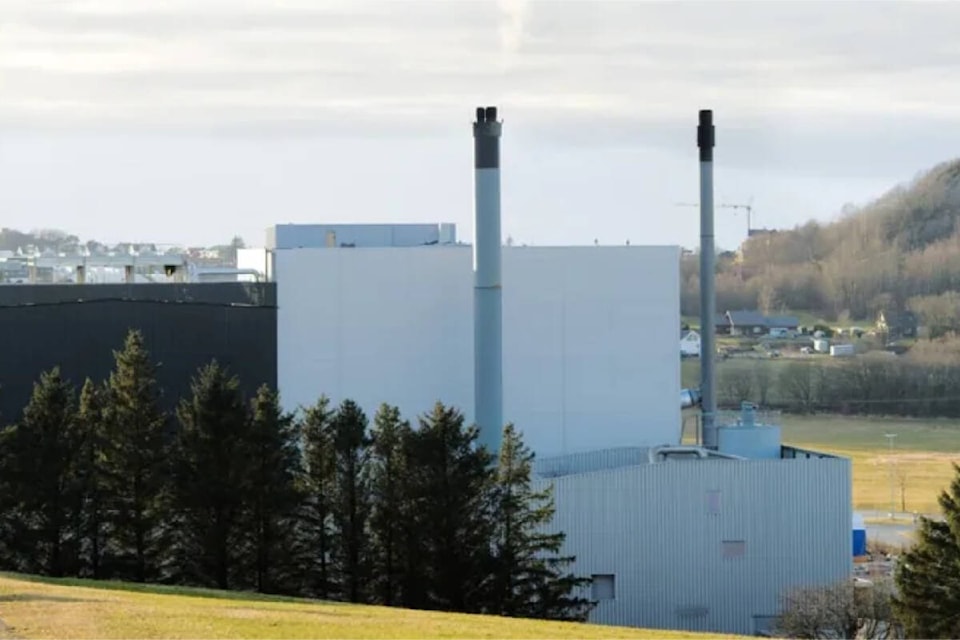Erminesekin First Nation is investing in a proposed waste-to-energy plant in Innisfail.
Edmonton-based Varme Energy and Ermineskin-owned Neyaskweyahk Group of Companies announced a joint working agreement this week to help fund a facility to convert gasified municipal waste and use the resulting syngas to generate electricity.
Ermineskin touts the proposal as an opportunity to invest in proven leading-edge technology that will create jobs, reduce emissions, generate energy, and shrink landfills.
“Our nation is focused on building a strong and vibrant economy that will support our families for generations to come,” said Neyaskweyahk Group of Companies CEO Maureen Ward in a statement accompanying the announcement. “We’re looking forward to working in partnership with Varme Energy to identify investment opportunities that support bringing waste-to-energy technology to Canada at scale.”
Varme Energy is the Canadian subsidiary of Green Transition Holdings, a Norway-based company with extensive experience developing waste-to-energy facilities in Europe. It plans to use its international experience to develop waste-to-energy facilities in Canada.
RELATED:
Innisfail exploring waste-to-energy project
Varme CEO Sean Collins said Ermineskin is bringing more to the table than financing.
“They’re helping with outreach as well. We’re looking to have Ermineskin help lead outreach to other First Nations across the province to provide their waste to other projects that we’re developing.
“So, they are a strategic partner with Varme to help pull together projects.”
Collins pitched a waste-to-energy proposal to a receptive Innisfail town council in June. Council approved a letter of intent to commit the town’s waste, which is currently trucked to a Camrose-area landfill.
“We’re still full-speed ahead on development planning on the project in Innisfail,” said Collins.
The $150- to $200-million Innisfail project would be designed to divert 100,000 to 200,000 tonnes of waste a year from landfills. It would employ 25 to 30 people full-time.
“(The way) to generally summarize our efforts is ‘chase the waste,’ he said. “We’ve had additional dialogue and negotiations with some folks who are interested in buying the power off of the Innisfail project.
“That’s a pretty key commercial agreement for us,” he said, adding they are working to lock in other waste and energy-uptake agreements.
“That’s the big push for us and hopefully, we can complete that in the next four to eight months.”
Varme has also gone to other central Alberta communities, including Rocky Mountain House and Blackfalds, seeking commitments to have their waste diverted to the proposed facility.
The response has been positive, but formal commitments have not yet been signed.
Varme hopes to have financing nailed down by the second or third quarter next year to clear the way for construction in Innisfail.
“It’s about a three-year process from there until you’re fully operational on the other side. So, you’re looking at an in-service date of early 2026.”
Varme’s process, which has been used successfully in Europe for decades, involves the combustion of waste in a low oxidation chamber at high temperatures, which gasifies the waste. The process creates a syngas and an ash byproduct. The syngas enters a second boiler chamber where oxygen is injected and the temperature adjusted to create clean combustion and steam.
Steam is either super-heated or saturated to provide heat that can be used for heating or in industrial processes. There is also the potential to use the steam to power turbines to create electricity directly for customers or to feed the province’s power grid. Varme facilities are also designed to capture and sequester carbon underground.
Varme is also working on a project in the Industrial Heartland area near Edmonton. A memorandum of understanding (MOU) has already been signed with one of the major industrial players in the region to provide land for a facility and buy its electricity.
Collins said he’s been “extremely happy with the market interest and appetite so far. We’ve been able to confirm an MOU agreement with a blue-chip partner in a relatively short period of time. We just feel the market is really keen on this so it’s guns ablazin’.”
